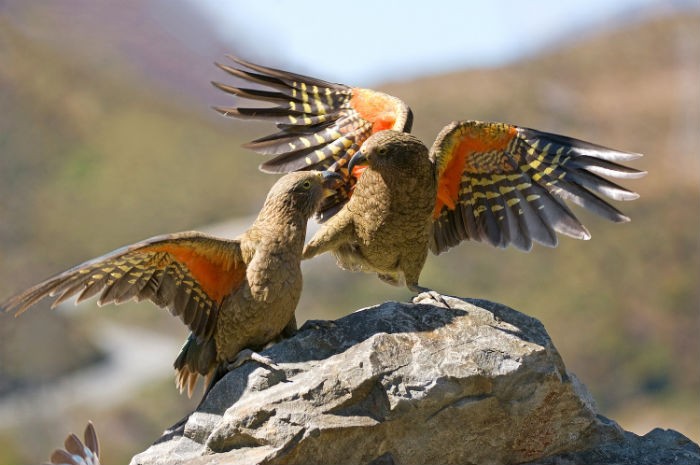You can contact LEARNZ, part of CORE Education, at:
Postal Address:
PO Box 13 678,
Christchurch 8141,
New Zealand
Kea are only found in the South Island mountains and their population is declining.

Kea range over about four million hectares along the ranges of the South Island, from Farewell Spit and the Kaikoura Ranges in the north, to Waitutu in the south.
Kea can be found from coastal dunes to high alpine peaks, but are most common in mountain forests and nearby subalpine and alpine zones.
Kea are not found in the Marlborough Sounds, Catlins or Blue Mountains. There are no kea in the North Island or Stewart Island.
Kea mainly nest within native forest.
Their foraging habitat includes:
Less is known about kea that live in the forest rather than in the mountains. Okarito Forest on the West Coast has its own lowland kea population. These birds spend their lives in the bush, never going to the mountains and nesting as low as only 100m above sea level. Kea can occasionally be seen around the Okarito lagoon and beach when they come down to feed on the flowering flax flowers. The nests of these kea are being monitored to learn more.

Estimating the size of the kea population is difficult due to their widespread range over rugged terrain. There is not enough current data to be able to accurately estimate the number of kea.
The Kea Conservation Trust carries out population surveys in set locations each year. Ten day surveys are completed where the number of birds in specific areas are counted daily between the hours of 6am to 9am and 6pm to 9pm. This data will help monitor the kea population over time.
Areas without pest control show a significant decline in the number of kea.
Between 1860 and 1970 around 150,000 kea were shot by people who saw them as a threat. Some kea have been known to attack sheep for food, feeding on fat around the kidney of live sheep. It was legal to shoot kea until 1970.
Kea are now on the nationally threatened list with approximately 1000-5000 birds remaining. You can find out more about the different levels of threat on the DOC threatened species classification webpage.

Complete the Kea habitat and population quiz >
Can you find out where kea came from and how they have evolved over time?